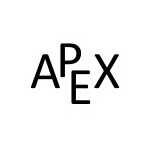2.2.1: Exercises 2.2
- Page ID
- 62900
Terms and Concepts
Exercise \(\PageIndex{1}\)
In your own words, explain the what is meant by a strict inequality.
- Answer
-
A strict inequality means we have \(>\) or \(<\).
Exercise \(\PageIndex{2}\)
In your own words, describe the two ways we can have break points.
- Answer
-
We have break points when the equality statement is true or where the statement is undefined.
Exercise \(\PageIndex{3}\)
Does a statement always switch from true to false at a break point? Give an example to support your argument.
- Answer
-
No, the statement \(x^2 >0\) is always true, but has a break point at \(x=0\).
Exercise \(\PageIndex{4}\)
What methods can you use to find the break points of a quadratic equality?
- Answer
-
We need to move everything to one side, and then we can factor or use the quadratic formula to find the roots.
Problems
In exercises \(\PageIndex{5}\) - \(\PageIndex{11}\), write each statement in simplified interval notation.
Exercise \(\PageIndex{5}\)
\(-3\leq x \leq 10\)
- Answer
-
\(x \in [-3,10]\)
Exercise \(\PageIndex{6}\)
\(x \geq -5\) and \(x>2\)
- Answer
-
\(x \in (2, \infty)\)
Exercise \(\PageIndex{7}\)
\(x \geq -5\) and \(x<2\)
- Answer
-
\(x \in [-5,2)\)
Exercise \(\PageIndex{8}\)
\(x \leq -5\) and \(x>2\)
- Answer
-
no values of \(x\) satisfy this statement
Exercise \(\PageIndex{9}\)
\(x \geq -5\) or \(x>2\)
- Answer
-
\(x \in [-5, \infty)\)
Exercise \(\PageIndex{10}\)
\(x\leq 4\) and \(x>-6\)
- Answer
-
\(x \in (-6,4]\)
Exercise \(\PageIndex{11}\)
\(x > 4\) or \(-2>x\)
- Answer
-
\(x \in (-\infty,-2)\cup (4,\infty)\)
In exercises \(\PageIndex{12}\) - \(\PageIndex{14}\), write each statement using inequalities.
Exercise \(\PageIndex{12}\)
\(x \in [3,4)\cup (4,\infty)\)
- Answer
-
\(3 \leq x <4\) or \(x>4\)
Exercise \(\PageIndex{13}\)
\(x \in [-2,4)\)
- Answer
-
\(-2 \leq x < 4\)
Exercise \(\PageIndex{14}\)
\(x \in (5,6] \cup [7,8)\)
- Answer
-
\(5 < x \leq 6\) or \(7 \leq x <8\)
In exercises \(\PageIndex{15}\) - \(\PageIndex{26}\), solve the given inequality and express your answer in interval notation.
Exercise \(\PageIndex{15}\)
\(\displaystyle \frac{x-2}{x-4} \leq 0\)
- Answer
-
\(\displaystyle x \in [2,4)\)
Exercise \(\PageIndex{16}\)
\(\displaystyle x^2-2x+ 8 \leq 2x+5\)
- Answer
-
\(\displaystyle x \in [1,3]\)
Exercise \(\PageIndex{17}\)
\(\displaystyle x^2+2x >15\)
- Answer
-
\(\displaystyle x \in (-\infty,-5) \cup (3,\infty)\)
Exercise \(\PageIndex{18}\)
\(\displaystyle -x^2+7x+10 \geq 0\)
- Answer
-
\(\displaystyle x \in \Big[\frac{7-\sqrt{89}}{2}, \frac{7+\sqrt{89}}{2} \Big]\)
Exercise \(\PageIndex{19}\)
\(\displaystyle \frac{x+3}{x-2} -2 \leq 0\)
- Answer
-
\(\displaystyle x \in (-\infty,2) \cup [7, \infty)\)
Exercise \(\PageIndex{20}\)
\(\displaystyle 2x^2-4x-45 \leq -4x+5\)
- Answer
-
\(\displaystyle x \in [-5,5]\)
Exercise \(\PageIndex{21}\)
\(\displaystyle \frac{3x+1}{x-2} \leq 2\)
- Answer
-
\(\displaystyle x \in [-5,2)\)
Exercise \(\PageIndex{22}\)
\(\displaystyle 1+x<7x+5\)
- Answer
-
\(x \in (\frac{-2}{3}, \infty)\)
Exercise \(\PageIndex{23}\)
\(\displaystyle \theta^2 - 5\theta \leq -6\)
- Answer
-
\(\displaystyle \theta \in [2,3]\)
Exercise \(\PageIndex{24}\)
\(\displaystyle y^3+3y^2 > 4y\)
- Answer
-
\(\displaystyle y \in (-4,0) \cup (1,\infty)\)
Exercise \(\PageIndex{25}\)
\(\displaystyle x^3-x^2 \leq 0\)
- Answer
-
\(\displaystyle x \in (-\infty,1]\)
Exercise \(\PageIndex{26}\)
\(\displaystyle \frac{x^2+3x+2}{x^2-16} \geq 0\)
- Answer
-
\(\displaystyle x \in (-\infty,-4)\cup [-2,-1] \cup (4,\infty)\)


